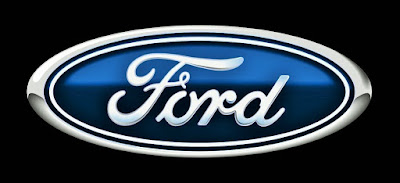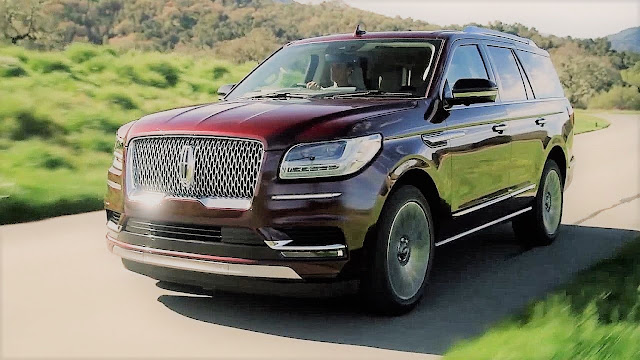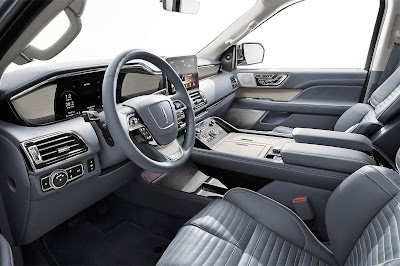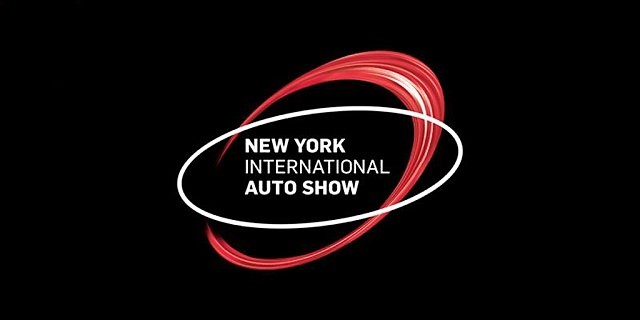Hey there, and welcome back to Adam’s Autos! Where I rate
autos to help YOU find an A-Rate ride!
It’s been a good minute since we last
talked cars, but now, (following college graduation and some
other business) there’s new site revisions (a search bar, language translator bar, more article reactions, upgraded website visuals, new mobile phone experience, and expanded auto news live feed) AND new forthcoming content!
Let’s take a look at some recent industry management shifts, emissions
issues, and upcoming models in a special 3-in-1 article. Time to get rolling!
________________________________________________________________________
1. Under New
Management: Fields Out, Hackett In at Ford
A change in leadership happens
from time to time at nearly every major company, and is necessary for business
to move forward. Just recently, Ford decided that a change up in management was
needed and replaced CEO Mark Fields, who had been with the company nearly 30
years, with Jim Hackett, CEO of Steelcase. Hackett has also been a Ford board
member since 2013 and has headed the Ford Smart Mobility branch for some time.
Overall, he’s a much fresher face to the management team at the company, which
isn’t necessarily a bad thing.
 |
My campus encounter with Alan Mulally, Ford's CEO from
2006-2014, was eye opening. |
Ford’s stock has supposedly
fallen 40% since Mark Fields took over for Alan Mulally in 2014, however, the
company stated that declining stock was not the reason for the management change.
Mulally was an outsider just like Hackett, being brought in from Boeing in
2006, and was key in the implementation of the company’s “One Ford” strategy
back in 2007 when the United States’ economic recession was taking shape. No
doubt, his outside knowledge helped Ford in the development of some of their
now most-profitable product lines, such as the Fusion and the Edge. I had a
chance to meet him in person at Michigan State University during his tenure,
and I got a really positive, inclusive vibe from Mulally. Thus, the bar has
been set high for Jim Hackett, who has been hailed by executives as a
“transformational leader.”
 |
Jim Hackett takes command of Ford at a critical time: During the
rise of autonomous driving. |
Ford’s mission moving forward is
to become a more mobile automotive company. Ford’s Smart Mobility branch is
rapidly expanding, nearing 600 employees, and we all know that technology in
general is not regressing. With the race towards developing an autonomous
driving vehicle heating up more with each passing month, Ford’s best bet is to
unite the company behind a leader who has a clear vision of the future and
passion of their own that can be instilled in employees. Jim Hackett seems to
have this and be the man for the job, saying himself that he wants people to
have fun and work and feel as though they can come to Ford and have a “great
day here.” In addition to Hackett being appointed to CEO, corporate operations
within Ford have been restructured, and product development boss Raj Nair has
been picked to help lead Ford North America and Steven Armstrong to lead Ford
Europe by Hackett himself.

Are you a Ford fan? Do you think
that these administration shifts will have any major impact? Personally, I feel
as though this can’t hurt, as new minds can potentially breed new innovation.
And some of Ford’s products are due for redesigns soon, making things even more
interesting. Time will tell us what this new shakeup will bring from the blue
oval!
__________________________________________________
2. MORE Darn Dirty Diesels: GM & Chrysler Too?
Another day, another lawsuit…
About diesels? For two automakers? Yep.

Both General Motors and Chrysler
are facing lawsuits claiming that they used emissions defeat devices on their
trucks. Sound familiar? Volkswagen went through a similar, much more massive
lawsuit (and subsequent recall) recently if you need a refresher. For GM, the
affected models are the 2011-2016 Chevrolet Silverado HD and GMC Sierra HD
pickups with the 6.6-liter V8 diesel engine. However, the bigger issue with
these engines is that they may emit two to five times the legal limit of
nitrogen oxide when driving. This dwarfs VW’s emission scandal by comparison
and affects 705,000 trucks. It’s believed that three different types of cheat
devices were used in the GM trucks, but GM denies these claims.
Across Town…

Over at FCA, a lawsuit has been
filed regarding diesel models of the Jeep Grand Cherokee and Ram 1500 built
from the 2014 to 2016 model years. Like GM’s trucks, it’s believed that a
possible defeat device was used to fabricate emission output levels. The
affected engine is the 3.0-liter diesel; It may contain equipment that violates
the Clean Air Act. Chrysler has already asked the EPA and CARB for permission
to install modified emissions software on these same cars and for diesel
emissions certifications for the 2017 model year versions. It’s believed that
the software update to older models will address concerns about emissions while
simultaneously not affecting overall engine performance or fuel efficiency.
This is somewhat different from what I’ve personally heard about some of the
fixes applied to Volkswagen’s diesel vehicles, which has caused a noticeable change
in performance in some models. Chrysler’s diesel cheat software is believed to
circumvent emissions controls when being driven at high speeds, where VW’s
cheat device reduced emissions when the car was hooked up to a dynamometer
(dyno).
If these lawsuits are carried
out, both automakers could face billions upon billions of dollars in fines. FCA
alone could face up to $4.6 billion in fines. The Department of Justice will
levy FCA’s fine if an agreement on diesel emissions is not reached soon.
 Can diesel survive yet ANOTHER blow?
Can diesel survive yet ANOTHER blow?
What’s
your opinion on these various diesel emission controversies? Will diesels be
around in the future, or is the death nail being put in its coffin with each
scandal? Time will tell, but one thing is for sure: The reputation of these
powertrains (in passenger cars) for now is somewhat cloudy.
__________________________________________________
3. Upcoming Models: New York Auto Show Fresh-Takes
The New York Auto Show passed not
long ago, and we got to see some new models that’ll be on our roadways soon. From
performance entries such as the 2018 Dodge Challenger Demon and Jeep Grand
Cherokee Trackhawk, to more every day entries such as a much-needed 2018
redesign for the Kia Rio, the New York Auto Show showed us some diverse rides.
Additionally, I made a few predictions prior to the show. Was I right about
them? Let’s explore a few of these interesting upcoming models!
1. 2019 Subaru Ascent
 |
| Subaru will soon throw their hat back into the 7-passenger crossover arena, albeit a little late, like VW. |
Subaru has shown that they are
fully committed to pumping out the best products they possibly can these days,
and part of their revised lineup includes jumping into the ever-popular
7-passenger crossover SUV segment. The Ascent will essentially serve as Subaru’s
follow-up to the rather awkward B9 Tribeca/Tribeca crossover from several years
ago, and at first glance, it appears to be more well-developed overall. Subaru’s
modern corporate design language is strong here, and works well with the SUV’s
lines to enhance its overall presence. The Ascent will be powered by a new
turbocharged 2.4-liter flat-four engine with direct injection. Given Subaru’s
legacy for offering boxer engines paired to a CVT and standard all-wheel drive,
I’d expect that philosophy to hold constant in this application, too. The
Ascent will ride on the same platform as the redesigned 2017 Impreza, and in
fact, that platform will underpin many future Subaru products, giving us a
better idea of what to possibly expect from other forthcoming Subarus.
Expect the Ascent to release
sometime in 2018 as a 2019 model year vehicle.
2. 2018
Porsche Panamera Sport Turismo
Station wagons aren’t as popular
as they used to be, but that doesn’t seem to have discouraged some automakers
from attempting to sell them in the United States. First at the auto show came
Buick, and now Porsche is gearing up to take a stab at the station wagon
market. Sharing its name with the concept car, the Panamera Sport Turismo rides
on the same wheelbase as the regular Panamera. There won’t be an extended
version. Although, headroom is improved over the regular model, as is the cargo
area. All-wheel drive is standard, and horsepower will range between 330 and
550 depending on the trim level. The rear spoiler on this model adjusts
automatically based on your speed to reduce drag, and adjusts even further
based on whether or not the panoramic sunroof is open.
The primary reason one would want
to opt for this over the regular Panamera or its competitors would probably be
because of its exclusivity. There aren’t many vehicles like this on the market,
and since station wagons are a rare sight now, you’ll definitely be the talk of
the town. Well, at least amongst the people who still like station wagons, love
luxury cars, and sports cars. Especially all three rolled into one.
Expect the Porsche Panamera Sport
Turismo to be priced from $97,250 this fall. The 4S model will start at
$110,250, and $155,050 will get you the upmarket Turbo.
3. 2018
Lincoln Navigator & Ford Expedition
 |
| 2018 Lincoln Navigator |
In an earlier article, I
discussed my impressions about the Lincoln Navigator concept. I was really
impressed with its styling direction, especially since the vehicle was last
FULLY redesigned for the 2003 model year – back when I was in ELEMENTARY SCHOOL.
Similarly, the Navigator’s platform mate, the Expedition, is being redesigned,
and takes styling elements from Ford’s F-150 line. One major takeaway from the
F-150 lineup that’s been incorporated into these new twins is an aluminum body
architecture, allowing for a major weight reduction of roughly 300 pounds (200
pounds – Navigator) compared to the outgoing models. Yet, the short wheelbase
models are a few inches longer than the older models, and the extended models
have grown by one inch. This allows for more efficient use of the cabin’s
interior space, and the Navigator and Expedition have already long had one of the more
comfortable second and third rows in their class.
 |
2018 Ford Expedition; 450 horsepower is expected from the updated EcoBoost
3.5-liter V6, although this is when running on
premium fuel. The Expedition "EL" (extended length)
has been renamed "Max" for 2018, as well. |
I had a chance to chat with some
Ford representatives at an event, and outside of modernizing the vehicle’s
architecture, special attention was paid to interior quality, convenience, and
vehicle technology as well. I was told that a special storage system – the only
in its segment – is now available in the rear of the Expedition (no word about
the Navigator) and allows consumers to stack and organize goods, like a pantry
in their home.
Overall, around 40 new features
have been introduced to this duo, such as various driver-assistance
technologies like adaptive cruise control and forward collision warning with
automatic braking, and lo and behold – an updated version of the twin-turbo 3.5-liter
EcoBoost V6 engine used in the F-150 will be used and paired to Ford’s new
co-developed 10-speed automatic transmission. Just going to say this now about
the transmission: CALLED IT! The 'old' revised 3.5-liter EcoBoost is good for 375
horsepower and 470 pound-feet of torque in the F-150. However, Lincoln says
that they expect the Navigator’s new V6 to make 450 HP (WOAH!) and 500
pound-feet of torque (WOW!), up from 380 HP and 460 pound-feet of torque last
generation. Big moves! Rear-wheel drive or all-wheel drive are both available,
as is an adjustable suspension system.
 |
The new Navigator's interior is fancy alright, however, it seems almost
"overdone" at times. For example, I'm no fan of "floating touchscreens",
like you see in this shot. It looks a little aftermarket to me, where other
rival SUVs have a screen that's flush with the dash or that pops up.
Additionally, I'm not too crazy about the "ribbed pattern" on the seats... |
The Navigator perhaps shows off
the most potential of this new platform, having the most presence, the most
features such as 30-way power seats, Lincoln’s new Revel sound system, and so
on. But I wonder if its perhaps… Too much? While I’m impressed with the
Navigator's design, the Expedition seems to strike the happy medium. I imagine
that outside of exclusive features such as the Revel audio system and 30-way
power seats, a fully loaded Expedition will satisfy most consumers in this
market, unless they’re looking for a more “exclusive” experience and demanding presence
driving down the road. The Expedition will start at around $48,000, the
Navigator $64,000. Black Label Navigators will have their own themed design
treatments and pricing, too.
Final Thoughts
Are you an SUV, wagon, or
crossover person? What are your impressions about these three models from the
New York Auto Show, and what others were your favorites? Many of these cars
will be on our roadways soon, so keep an eye out! I’ve already seen a 2018
Expedition on the road, likely undergoing emissions testing.
Share your thoughts or reactions about any of the discussed topics in this 3-in-1!
That brings us to the end of the road for now!
Until next time, ROLL ON!
Copyright © 2017 Adam's Autos, All Rights Reserved.















